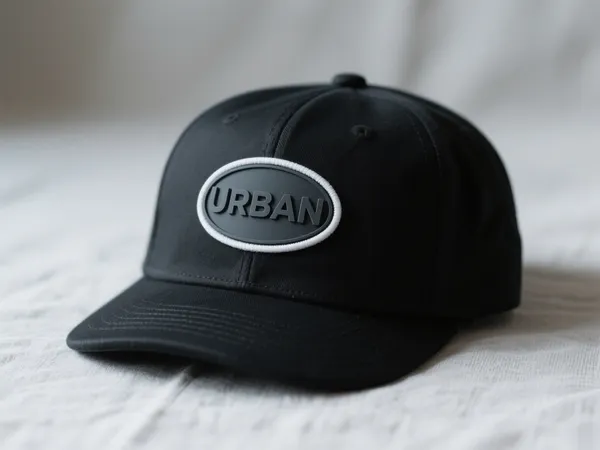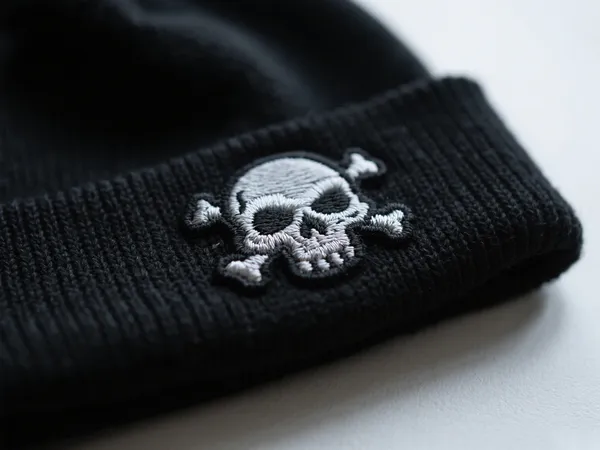Introduzione alla creazione di patch
Imparare a realizzare una toppa apre infinite possibilità di espressione personale, promozione del marchio e riparazione di indumenti. Che tu voglia creare emblemi personalizzati per la tua attività, personalizzare il tuo guardaroba o iniziare un hobby creativo, questa guida completa copre tutti i metodi, dalle semplici tecniche senza cuciture alla produzione di livello professionale.

Diversi tipi di patch che puoi realizzare
1. Toppe in tessuto
- Embroidered patches
- toppe applicate
- toppe trapuntate
- Toppe di riparazione Boro
2. Toppe non in tessuto
- toppe in PVC/gomma
- toppe in pelle
- toppe stampate in 3D
- Toppe con stemma in metallo
3. Metodi di fissaggio
- Sew-on patches
- Toppe termoadesive
- Toppe con velcro
- Adhesive patches

Materiali necessari per la realizzazione di patch fai da te
Forniture di base
- Tessuto di base (cotone, denim, feltro)
- Filo o filato da ricamo
- Aghi (varie misure)
- Forbici per tessuti
- Colla per tessuti o tela termoadesiva
Strumenti professionali opzionali
- Telaio da ricamo
- Macchina da cucire
- Impostazione della serigrafia
- macchina per pressatura a caldo
- Kit per iniezione di stampi in PVC
Come realizzare una toppa ricamata passo dopo passo
Metodo 1: Toppa ricamata a mano
- Progetta la tua patch
- Disegno schizzo su carta
- Trasferisci su tessuto con un pennarello lavabile
- Scegli la combinazione di colori
- Preparare il tessuto
- Tagliare il twill o il feltro a misura + ¼” di bordo
- Stabilizzare con l'interfaccia se necessario
- Fissare nel telaio da ricamo
- Ricama il disegno
- Utilizzare il punto raso per le aree riempite
- Contorno con punto erba o punto indietro
- Aggiungi dettagli con nodi francesi
- Rifinisci i bordi
- Tagliare il tessuto in eccesso
- Applicare il controllo sfilacciamento ai bordi
- Aggiungere il supporto termoadesivo (facoltativo)

Metodo 2: Toppa realizzata a macchina
- Digitalizza il tuo design
- Crea o converti in file di ricamo
- Selezionare i tipi di punto appropriati
- Programmare le impostazioni della macchina
- Fasi del ricamo a macchina
- Stabilizzatore del cerchio e tessuto
- Esegui la sequenza di ricamo
- Monitorare le modifiche del thread
- Elaborazione finale
- Togliere dal cerchio
- Tagliare con coltello caldo per sigillare i bordi
- Applicare il supporto adesivo
Come realizzare toppe termoadesive
Utilizzo di Fusible Web
- Disegno di traccia su carta termoadesiva
- Stirare sul retro del tessuto
- Disegno ritagliato
- Staccare la carta e stirarla sul capo
Creazione di termoadesivi stampati
- Stampa il disegno su carta transfer speciale
- Tagliare con precisione
- Pressa a caldo sul tessuto
- Sigillare con spray protettivo
Tecniche professionali per la realizzazione di patch
Produzione di toppe in PVC
- Crea uno stampo 3D dal tuo progetto
- Mescolare e iniettare PVC colorato
- Cura in forno specializzato
- Controllo di qualità di ogni pezzo
Produzione di toppe tessute
- Convertire l'opera d'arte in file di telaio digitale
- Telaio a filo con colori selezionati
- Tessuto a toppa intrecciata
- Patch individuali tagliate al laser
Idee creative per patch personalizzate
Applicazioni di moda
- Disegni sul retro della giacca in denim
- Abbellimenti per cappelli
- Personalizzazione delle sneaker
- Personalizzazione della borsa
Usi aziendali
- Patch con logo aziendale
- Distintivi di riconoscimento per i dipendenti
- Merchandising dell'evento
- Articoli promozionali del marchio
Concetti Speciali
- toppe fosforescenti
- Cerotti profumati
- Patch interattive (con LED)
- Patch con codice QR

Risoluzione dei problemi comuni di creazione delle patch
Problema: bordi sfilacciati
Soluzione: Utilizzare punti più stretti, controllo sfilacciamento o finitura del bordo merrow
Problema: distorsione del design
Soluzione: Stabilizzare meglio il tessuto, regolare la tensione
Problema: guasto dell'adesivo
Soluzione: Pulisci la superficie, usa una temperatura più alta, premi più a lungo
Domande frequenti sulla creazione di patch
D: Qual è il modo più semplice per realizzare una patch?
A: Utilizza forme di feltro pretagliate con colla per tessuti: non è necessario cucire.
D: Posso realizzare delle toppe senza cucire?
R: Sì, utilizzando colla per tessuti, termoadesiva o materiali termoadesivi stampabili.
D: Come si rendono impermeabili le toppe?
A: Utilizzare materiale in PVC o applicare uno spray impermeabilizzante sulle toppe di tessuto.
D: Qual è il materiale più resistente per le toppe?
A: Il PVC o la pelle con cuciture rinforzate durano più a lungo.
Suggerimenti avanzati per risultati professionali
- Servizi di digitalizzazione: Per progetti complessi, utilizzare la digitalizzazione professionale
- Abbinamento dei colori: Utilizzare le guide Pantone per la coerenza del marchio
- Finiture dei bordi: Considerare il taglio laser per la precisione
- Produzione in serie: Investire in macchinari per la produzione di patch per quantità
- Controllo di qualità: Implementare la checklist di ispezione
Dove reperire i materiali per realizzare le toppe
Per i creatori seri, prendi in considerazione:
- Negozi di ricamo specializzati
- Fornitori di filo sfuso
- Grossisti di tessuti
- Fornitori di adesivi industriali
- Produttori di stampi personalizzati
Questa guida copre tutti gli aspetti della realizzazione di una toppa, dai lavori manuali per principianti alla produzione professionale. Seguendo questi metodi e consigli, puoi creare toppe personalizzate per qualsiasi scopo, con risultati di qualità e duraturi.



